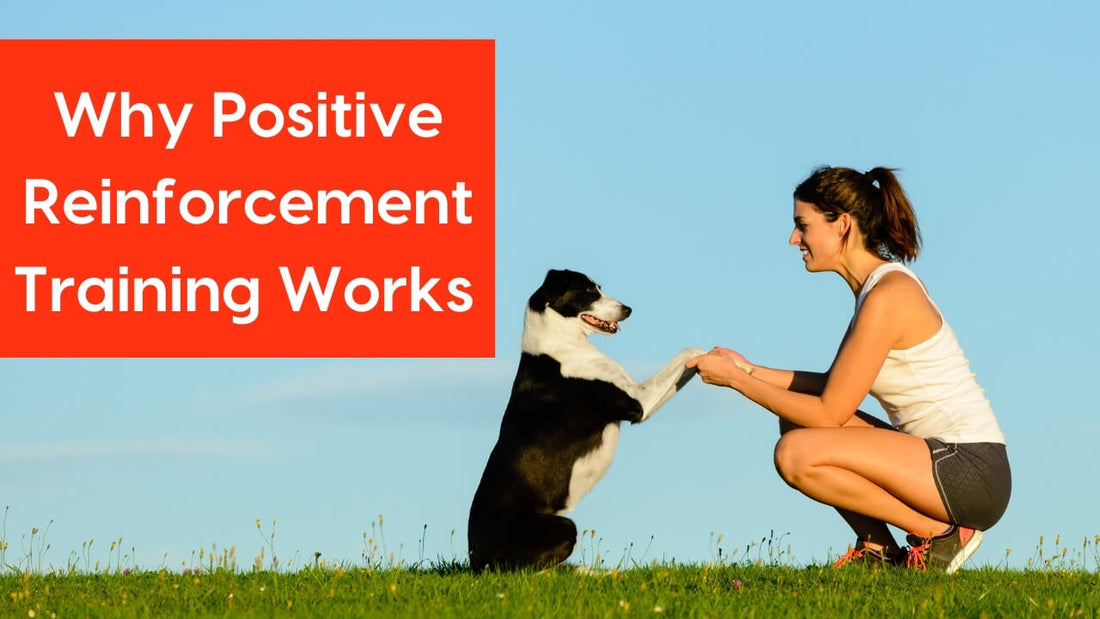Why You Should Choose Positive Reinforcement Dog Training w/ Holly Ovington | Pupford
26 Comments Filed under training
In today’s episode, we are going to discuss why you shouldn’t use aversives like shock collars, prong collars, or choke chains… even if “some” trainers try to convince you otherwise!
INTRODUCTION OF HOLLY
Holly has been passionate about dogs from the get go! Holly was part of 4-H dog clubs from a young age, learning to train and show her own dogs.
Holly is certified with the Karen Pryor Academy, a Fear-Free Certified Trainer, an Instructor for Dog Biz Dog Walking Academy and Walks N' Wags First Aid Certified and runs Positive Paws Training in the Vancouver area.
Holly's next goal is to complete a certification in separation anxiety.
Connect with Holly via her website.
Connect with Holly via Instagram.
Connect with Holly via her podcast.
AUDIO VERSION
Want to hear more podcasts like this? Please click here.
VIDEO VERSION
Want to see more videos like this? Please click here.
OVERVIEW OF WHY YOU SHOULD CHOOSE POSITIVE REINFORCEMENT DOG TRAINING
FIRST AND FOREMOST, WHAT IS THE DIFFERENCE BETWEEN POSITIVE REINFORCEMENT AND POSITIVE PUNISHMENT? (Starts at about 2:11)
- Simply put, in dog training terms positive means adding something to your dog’s environment.
- Punishment means doing something to reduce the frequency of a certain behavior
- Reinforcement means doing something to increase the frequency of a certain behavior
- So… positive reinforcement is about adding a reinforcer (like treats or play) when your dog does something good so that they will be more likely to do that again in the future!
- And positive punishment is adding some type of punishment (a shock from an e-collar, a tightening of a choke chain, etc.) to try and decrease the likelihood of the behavior happening again
SO WHY DO YOU RECOMMEND FOCUSING ON POSITIVE REINFORCEMENT? (Starts at about 4:30)
- Holly recommends using positive reinforcement because that is what scientific studies have shown to be extremely effective AND not harmful to your dog
- Positive reinforcement is also a more enjoyable experience for both the dog and the human
- Positive reinforcement fosters trust and communication with your dog, while punishment based methods can do the opposite
WHAT ARE SOME OF THE NEGATIVE EFFECTS OF USING POSITIVE PUNISHMENT LIKE CHOKE CHAINS, E-COLLARS, ETC? (Starts at about 7:05)
- With punishment based methods, you only focus on the ‘bad’ behaviors… you aren’t actively teaching your dog what you want them to do
- Because of this, your dog can end up living/acting in a state of fear and often suppress their emotions and feelings which can lead to even more problems
- It’s hard for our dogs to ever know what we do want them to do, if all we ever focus on is the negative
WHAT WOULD YOU TELL SOMEONE TO SAY IF A TRAINER OR FRIEND RECOMMENDS AN AVERSIVE METHOD TO THEM? (Starts around 10:05)
- Holly doesn’t recommend fighting on social media about this stuff… because that never works ;)
- If people genuinely want to know, she always likes to talk about the scientific studies that show the positive side of of positive reinforcement
- One point Holly made is NOT to shame people for using aversives… some pup parents just might not yet know about positive reinforcement
WHAT IS A PIECE OF ADVICE YOU HAVE FOR PUP PARENTS WHO MAY BE STRUGGLING TO TRAIN THEIR DOGS? (Starts around 14:05)
- Be patient! Your dog is trying to learn brand new things
- And most importantly, shift your mindset from all the “bad things” your dog is doing to instead focusing on rewarding the good that your dog does!
USING POSITIVE REINFORCEMENT WITH YOUR DOG(S)
Not only can aversive methods be physically dangerous for your dog, they can cause strain and trouble for your relationship and communication. Positive reinforcement dog training is scientifically proven to be the most effective while also being the least harmful for your dog.
